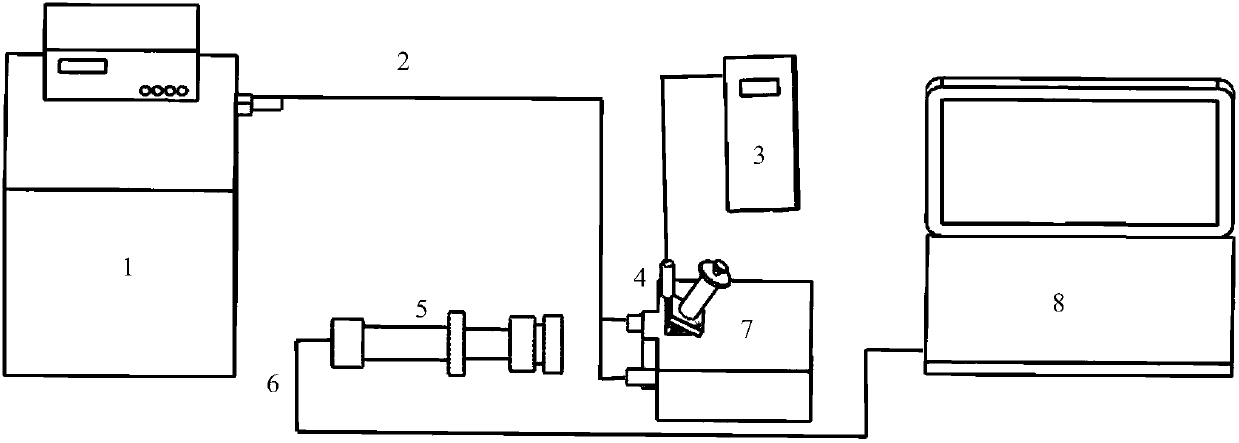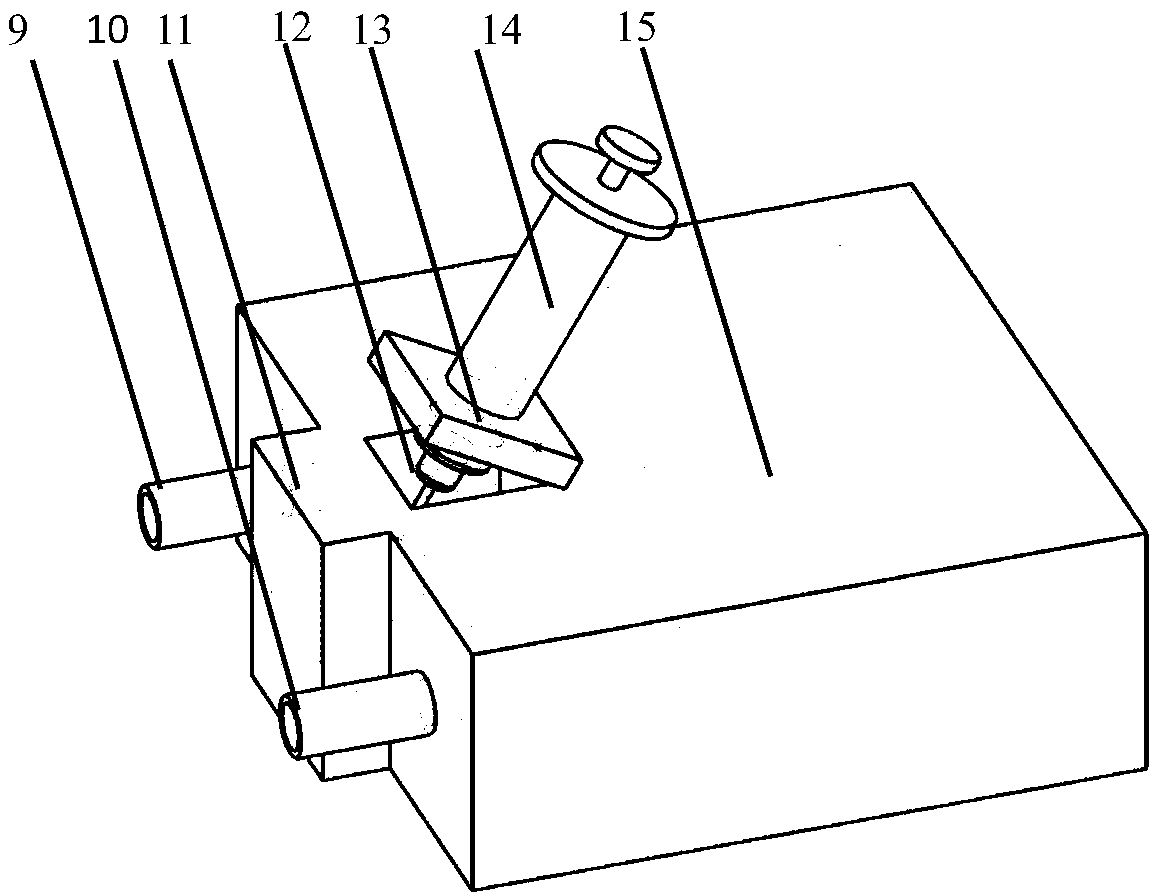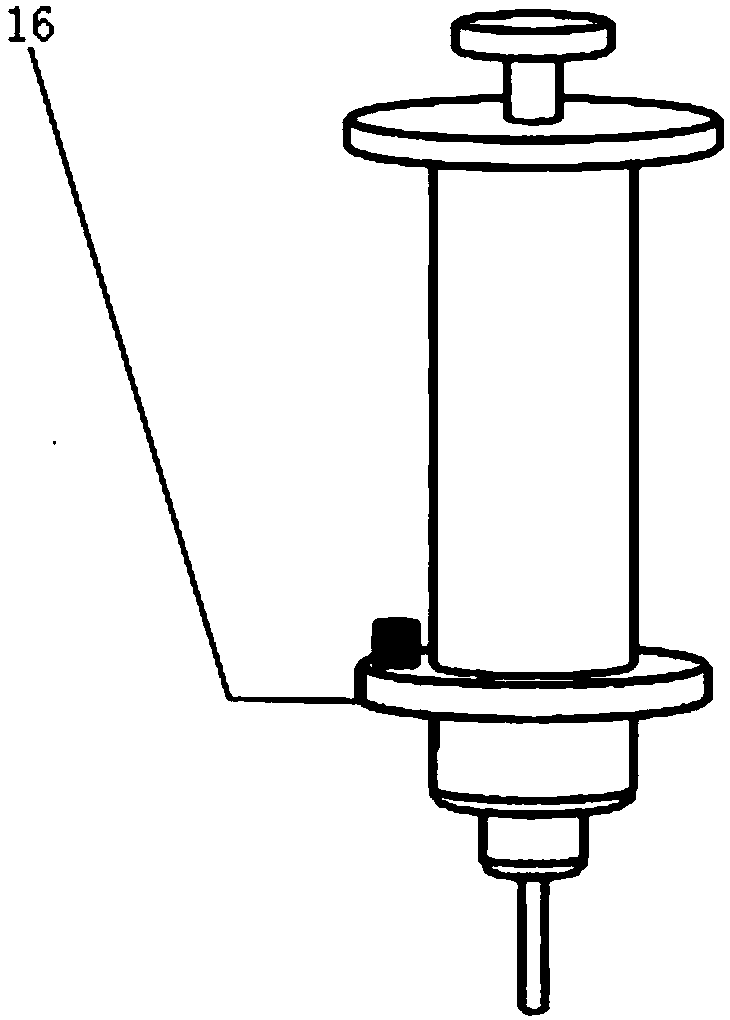Visualization device and method for multidirectional observation of hydrate generation and decomposition
A hydrate formation and multi-directional technology, applied in the direction of measuring devices, analysis materials, test crystals, etc., can solve problems such as easy to be covered with a layer of water mist, difficult to control conditions, and affect observation, and meet the requirements of high-precision experiments. Accurately reflect the test temperature and prevent the effect of cooling loss
- Summary
- Abstract
- Description
- Claims
- Application Information
AI Technical Summary
Problems solved by technology
Method used
Image
Examples
Embodiment 1
[0055] A visualization device for multi-directional observation of hydrate formation and decomposition, such as figure 1 As shown, it includes a low temperature and constant temperature control system, a normal pressure visual reaction device 7, a temperature acquisition instrument and a CCD imaging system;
[0056] The low temperature and constant temperature control system is a low temperature constant temperature tank 1, which is connected to the circulating fluid inlet 9 and the circulating fluid outlet 10 through the rubber pipeline 2, and the surface of the rubber pipeline 2 is wrapped with a layer of foam insulation tube.
[0057] The normal pressure visualization reaction device 7 includes a temperature-controlled circulation tank 15, a reaction tank 12, a circulating fluid inlet 9, and a circulating fluid outlet 10. The temperature-controlled circulating tank 15 is provided with a reaction tank 12, and the tank wall of the temperature-controlled circulating tank 15 is ...
Embodiment 2
[0063] The atmospheric pressure visualization reaction device described in Example 1 realizes the method of multi-directional observation of hydrate formation and decomposition characteristics, including the following steps:
[0064] (1) Wash and dry the reaction tank 12 repeatedly with absolute ethanol, inject cyclopentane into the reaction tank 12, and put the probe 4 in the reaction tank 12;
[0065] (2) Turn on the low temperature constant temperature tank 1 to the temperature T 1 , -10℃1 2 , get the temperature difference C=T 2 -T 1 ;
[0066] (3) Repeat the operation step (2) 3 times or more to obtain the average value of the temperature difference C
[0067] (4) Adjust the low temperature constant temperature tank 1 to the set temperature Keep for a period of time until the temperature T in the reaction tank 12 3 Satisfy 0℃3 When <1°C, add ice particles to the reaction tank 12 to induce cyclopentane hydrate;
[0068] (5) Adjust the temperature of low temperatur...
PUM
 Login to View More
Login to View More Abstract
Description
Claims
Application Information
 Login to View More
Login to View More - R&D
- Intellectual Property
- Life Sciences
- Materials
- Tech Scout
- Unparalleled Data Quality
- Higher Quality Content
- 60% Fewer Hallucinations
Browse by: Latest US Patents, China's latest patents, Technical Efficacy Thesaurus, Application Domain, Technology Topic, Popular Technical Reports.
© 2025 PatSnap. All rights reserved.Legal|Privacy policy|Modern Slavery Act Transparency Statement|Sitemap|About US| Contact US: help@patsnap.com



